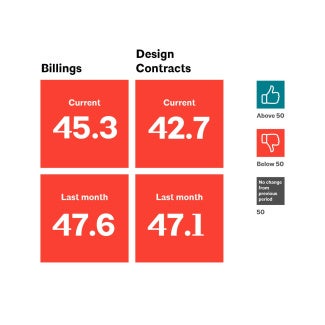Best practices for enhancing drawings & specifications
Author: Deltek
Accurate design specifications help prevent delays associated with RFIs, change orders, and rework. Explore best practices for clear and concise drawings and specifications to improve contractor communication and boost project efficiency.

Design specification best practices
Why are accurate construction specifications so important? Clear and concise drawings and specifications prevent unnecessary Requests for Information (RFIs), change orders, rework, and other delays.
In this article, you will discover best practices to ensure your drawings and specifications match and how to help designers, architects, and specifiers reach the highest level of clarity when communicating with contractors to boost your firm’s project efficiencies.
Key requirements for success
Accurate drawings and specifications provide clear project intent, performance, and instruction for contractors. Conversely, when construction documents need more detail, it affects the accuracy of the bid and, down the road, will impact the project schedule and budget. For example, guessing on products or model numbers can require the contractor to scramble to find the correct information, reduce the accuracy of the bid and increase time spent by architects and specifiers answering RFIs.
With detailed and accurate drawings and specifications, you can:
- Ensure the design intent has strong graphic and written instructions.
- Attract quality bids by providing contractors with comprehensive material and installation details to bid on the project more accurately.
- Save time and reduce costs by minimizing delays and change orders that arise with different expectations and interpretations between the architect, engineer, contractor, and owner.
Drawings and specs are complimentary and are one document. Whether you are working on floor plan dimensions, defining head and jam details, or writing keynotes, ask yourself, can someone else understand this information? Learn more in the educational webinar: Tips to Enhance Drawings and Specifications.
According to Scott Taylor, Senior Specification Writer at Deltek, “a well-written, accurate spec saves time and money, and it can help avoid the challenges arising from inadequate communication and limited detail.”
Greater specificity equals fewer RFIs
A robust specification must be clear, concise, complete, correct, and consistent. Greater specificity means fewer questions and RFIs. Getting specific requires document coordination and asking questions. Every player on the project, from the architect to the owner, responds differently to drawings versus specs. For example, architects are typically more visual, while others may be more word oriented. That is why coordination is vital in drawings, specs, and communication.
Additional best practices for solid specifications include:
- Reduce conflicts between specs and drawings by being straightforward. For example, is it drywall or gypsum board? Say it once and in the right place.
- Provide enough information for an accurate bid. A contractor can quickly provide a correct bid with a clear picture of the products, applications, and installation methods.
- Ensure the drawings, spec descriptions, and products align. Precise requirements ensure no room for confusion or doubt, allowing for a more efficient and effective process and work completed as intended. In addition, good specs will help keep the project on schedule and minimize wasted time and money.
Creating smoother communication & collaboration
Effective communication is vital to drawings and specifications. Effective communication can prevent drawing and specification flaws, reduce delays, and change orders, to deliver a project that achieves the owner’s goals. In addition, bringing key players into the project early, leveraging a firm’s knowledge, and reviewing past project successes to drive better future outcomes is the fuel for effective project collaboration.
Firms with drawings and specifications that work together reap benefits, including:
- Better team communication
- Fewer changes and rework from RFIs
- Improved bidding, construction, and on-time project delivery
- Happier owners and other project stakeholders
Specifications provide the roadmap to your design. The instructions ensure that each element achieves the project's end goal. Moreover, creating a solid specification will help ensure more accurate bids while maintaining schedules and budgets. Therefore, it is essential to coordinate drawings and specifications, provide clear instructions, and practice effective collaboration and communication for a successful project.
The AEC industry is reshaping how it builds and manages projects, which means implementing modern technology. Deltek and AIA have teamed up to deliver Deltek Specpoint, home of AIA MasterSpec®, which consists of comprehensive online building product research and selection content combined with a streamlined specification design and publishing tool that pulls from decades of experience serving the industry’s specialized needs. Learn more here.
About Deltek
Better software means better projects. Deltek is the leading global enterprise software and information solutions provider for project-based businesses. More than 30,000 organizations and millions of users in over eighty countries worldwide rely on Deltek for superior project intelligence, management, and collaboration. This includes over 11,000 architecture and engineering firms, representing 80% of the Engineering News-Record (ENR) Top 500.



